At the beginning of the 20th century, "even in medical clubs", the term was "strange and incomprehensible". Leon Wachholz, an influential Krakow court expert, claimed that to his colleagues, masochism sounded like something "Assyrian, Semitic, even Eastern". But definitely not sexual.
The term masochism was born in the mind of one of the most important pioneers in research on human sex life. Richard von Krafft-Ebing was responsible for the earliest scientific classification of perversion and for the first professional research on homosexuality. Today, his merits also include drawing attention to sexual paraphilias related to suffering. By the way:earning a peculiar reputation for two controversial writers
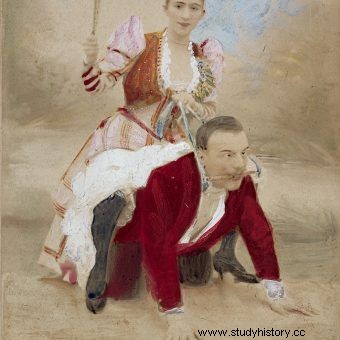
A man on all fours ridden by a woman with a whip. 19th-century graphic from the collection of prof. Krafft-Ebing.
.
People who enjoy pleasure from inflicting pain Krafft-Ebing called sadists after the French libertine Marquis de Sade. On the other hand, those who got excited about being beaten and mixed with mud were masochists to him. The term came from the name of Leopold von Sacher-Masoch. A novelist that had very much to do with Austria but nothing at all to do with Middle Eastern Assyria.
Whose name does masochism come from?
This artist, like no one before him, painted the face of suffering perversions. In 1870 he published Venus in Fur . The story of Seweryn, who wants to be humiliated, beaten, deprived of even shreds of human dignity. The hero of the novel emphasizes:"There is no equality in love". And he knows that he is not meant to be a tyrant, but a rebuked, whining dog.

Leopold von Sacher-Masoch in portrait photography
The man's partner, Wanda, bursts out laughing when she hears what is expected of her. He only jokingly says:"For example, I have a talent for despotism!". However, he quickly discovers that he does indeed have it. And she begins to explore a side of her nature that she never even expected existed:
I knelt at her feet, hoping that she would caress me - but she shook me off brutally and rang the bell, the sound of which ran into the room three black women, black as carved from ebony dressed in red robes. They lunged to restrain me. I understood my plight and wanted to get up, but my goddess's stern glare seemed to pin me down. I did not even notice when stocky black women overwhelmed me, tied my arms and legs.
- Pass me the whip, Heydee - Wanda ordered one of the slaves with calm and cold blood.
The negro obeyed the order in no time, giving the fierce lady's whip on her knees.
- Take my fur off me and give me the ermine scarf - she continued, and the negress curled up like a weasel, nimbly and gracefully.
- Tie him to a pole here - was the voice of a woman hugging herself in an ermine. The Negroes tied my waist to a post that supported the canopy over an ornate bed in an old-Italian style, then all of them vanished, as if the ground had given way beneath them.
Wanda approached me quickly, spreading the train of her satin gown like a peacock's tail. Her red hair seemed to shine with sparks. She grabbed the whip, put one hand on her hip, and in that position began to laugh.
- The fun and play between us are over, she was saying coldly through gritted teeth. - You put yourself in my hands, unreservedly; I use it and satisfy your desires with delight (…). Well, you are no longer my lover, but a slave and you will know who I am .
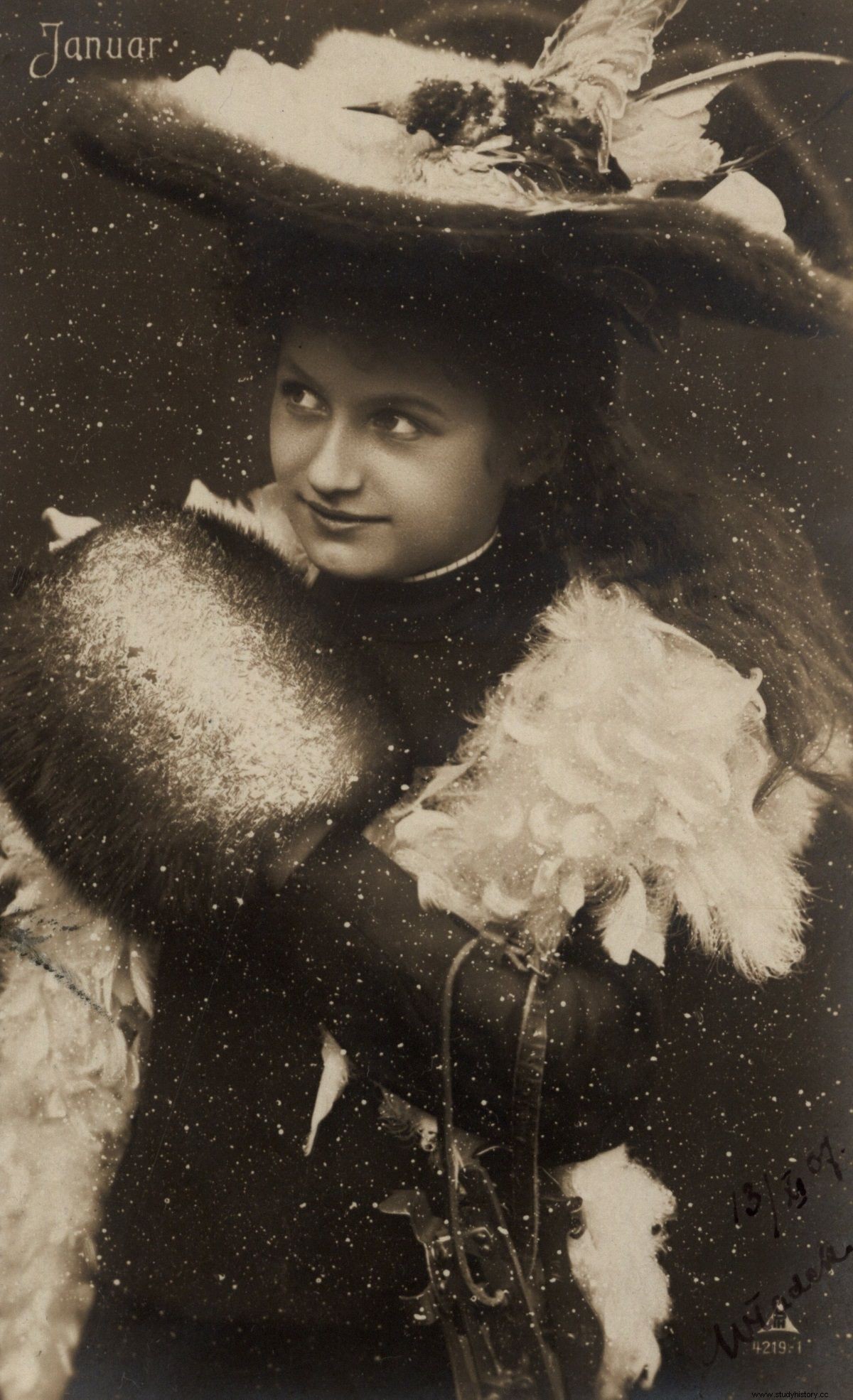
A woman in a fur coat. Postcard from the turn of the 19th and 20th centuries
The novel has received exactly the reception one would expect. Outrage was mixed with disgust. But it wasn't an instant bestseller. There were many more people who commented on the excesses of the heroes with a half-mouth than those who actually read the book. For 40 years in Poland, no one was even interested in translating Venus in a fur coat . It was margin literature.
The state of affairs was not changed either by Krafft-Ebing's research, or by the fact that Sacher-Masoch became the godfather of "masochism", which scandalized society during his lifetime. Both Seweryn's fate and the new classification of deviations entered the mainstream only thanks to an extremely greedy and demoralized countess. A woman who alone personified the corruption of the Russian aristocracy. And in which figure the figure of Wanda was hanging around - in a sick, exaggerated mutation - revealing her tendencies to be strangled by men.
A vampire and her slaves? The story of countess Maria Tarnowska
Maria Nikolaevna Tarnowska's life was full of erotic antics. She was the wife of a wealthy officer, Wasyl Tarnowski. This relationship, however, was not enough for her. Her brother-in-law adored her, but instead of him she chose a fabulously wealthy baron, Stefan Borzewski. She did not wipe her tears when the rejected lover committed suicide. Even the visit of her husband, who came only to… murder Borzewski, who tarnishes his honor, did not freeze her. The divorce of the dissolute countess echoed throughout Europe. Just like her next loves.
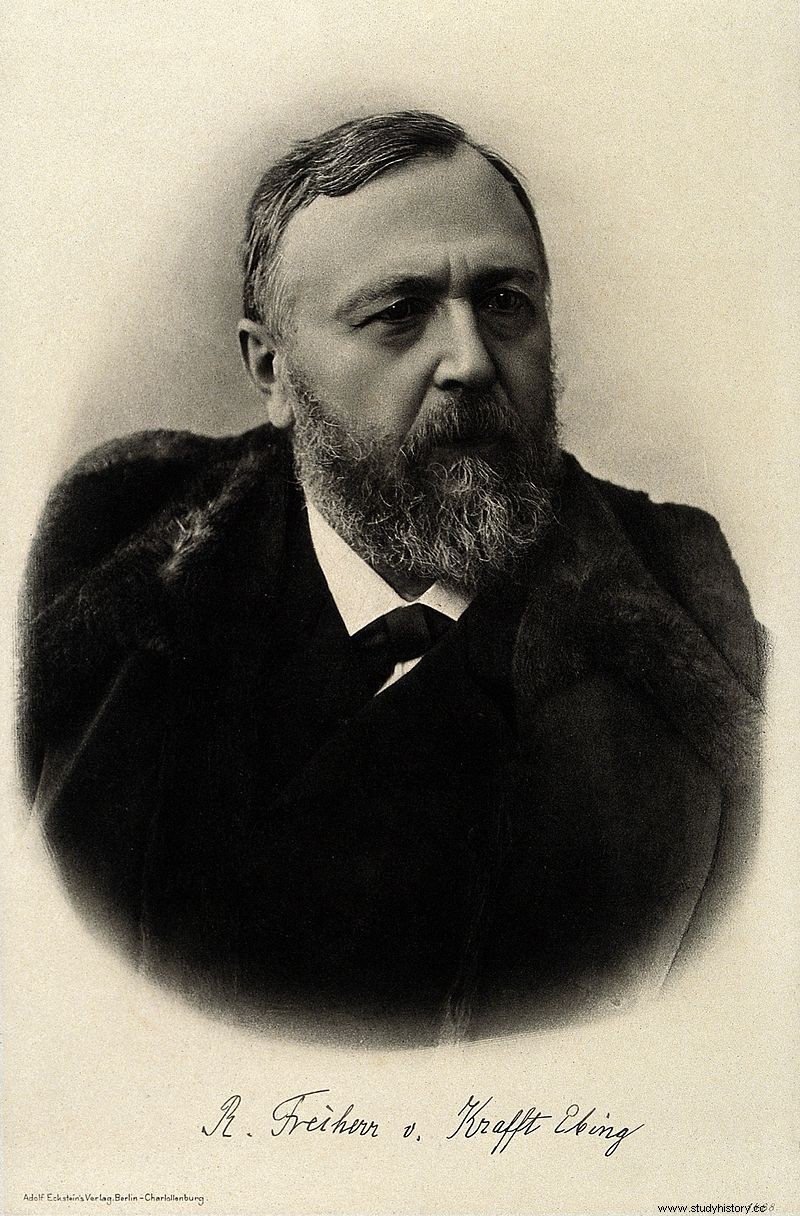
Richard von Krafft-Ebing in portrait photography
The men she was entangling were ready to jump after her into the fire. They got rid of their property, risked their lives in crazy venues, offered to kill themselves as long as Tarnowska paid attention to them. She changed them like gloves. Only Paweł Kamarowski took care of it for a longer time. He was another Russian magnate, even richer than the previous ones. He not only offered her a wedding, but also agreed to sign a life insurance policy for a huge amount of one million rubles. If something happened to him, all the money would go to the alluring countess.
It was not long before Kamarowski's tragic end. Tarnowska found a slow tool in the person of Nikolai Naumov, a tutor employed by her husband. The man was expected to give lessons to the countess's children. Instead, he bustled around his dazzling employer, surrounded by a wreath of admirers. It didn't take long for the tutor's perverse tendencies to become apparent.
Naumow asked Tarnowska to put out the cigarettes on his shoulders and to stick the blades into his skin. He howled in delight as she whipped him. Finally, now completely under the power of the sadistic woman, he agreed to kill her newly married husband. It was only when the bullets pierced Kamarowski's body that what he had done reached Naumowo. Captured by the police, he revealed all the details of his relationship with the ruthless countess.
"He enjoys feeling like a woman's slave." Press discovers sado-maso
The murder took place in 1907. However, the trial did not start until 1910. It was conducted before a tribunal in Venice and became one of the biggest sensations of the last decade before the outbreak of the Great War. The most famous psychiatrists spoke about the condition of the murderous couple. The theories of Krafft-Ebing and Sigmund Freud were quoted. Masochism, hitherto on the margins of science, took the imagination of a decadent era by storm.
In April 1910, Gazeta Lwowska reported in detail on the expert statements. "He should be regarded as an abnormal man" - said one of the Italian experts about Naum. - “He is visibly twitching his facial muscles, his hands are shaking (…). He's a masochist, which means he enjoys it when he feels like a woman's slave. ”
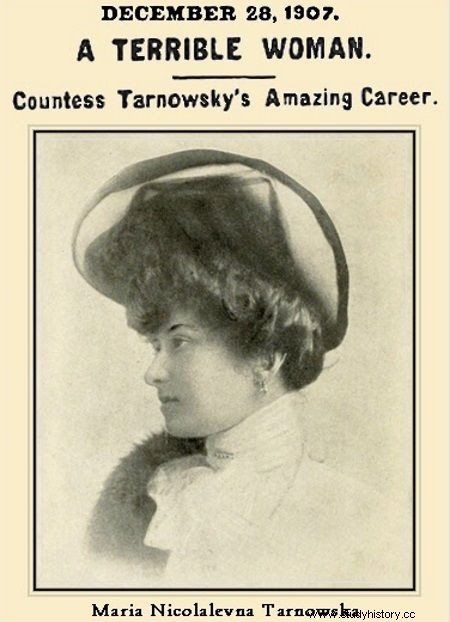
Maria Tarnowska in a photo published in the press
The Krakow dailies "Naprzód" and "Nowa Reforma", in turn, quoted the testimony of Tarnowska herself. They showed that Naumow, like Seweryn before Wanda, revealed all his secrets to the spoiled aristocrat. He called himself a masochist, he himself explained to her what this perversion was related to and how she could most easily control it.
"An individual ties his arms and legs, gags his mouth." Doctors about masochism
From then on, it was instinctively to look for a masochistic background in all similar stories. They were indicated by witnesses, specialists, and even the accused themselves, who counted on treatment in a hospital instead of a prison sentence. Psychiatrists and sexologists went from ignorance to absolute fascination with the newly diagnosed aberration.
This obsession did not diminish over time. In 1934, the psychiatrist Albert Dryjski was already convinced that many perfectly healthy children had strong masochistic tendencies. They experience their first sexual sensations in their lives "under the influence of hitting the buttocks", "slapping in the face" or "slapping in the back". Even in innocent games, where peers slapped friends, the doctor from Warsaw saw an erotic context.
“People who (…) have practiced this kind of entertainment often find a sexual admixture to the pain they feel. The above manipulations also show that some children take part in them mostly as sadists, others again as masochists "- he explained in the pages of Problems of child and school sexuality .
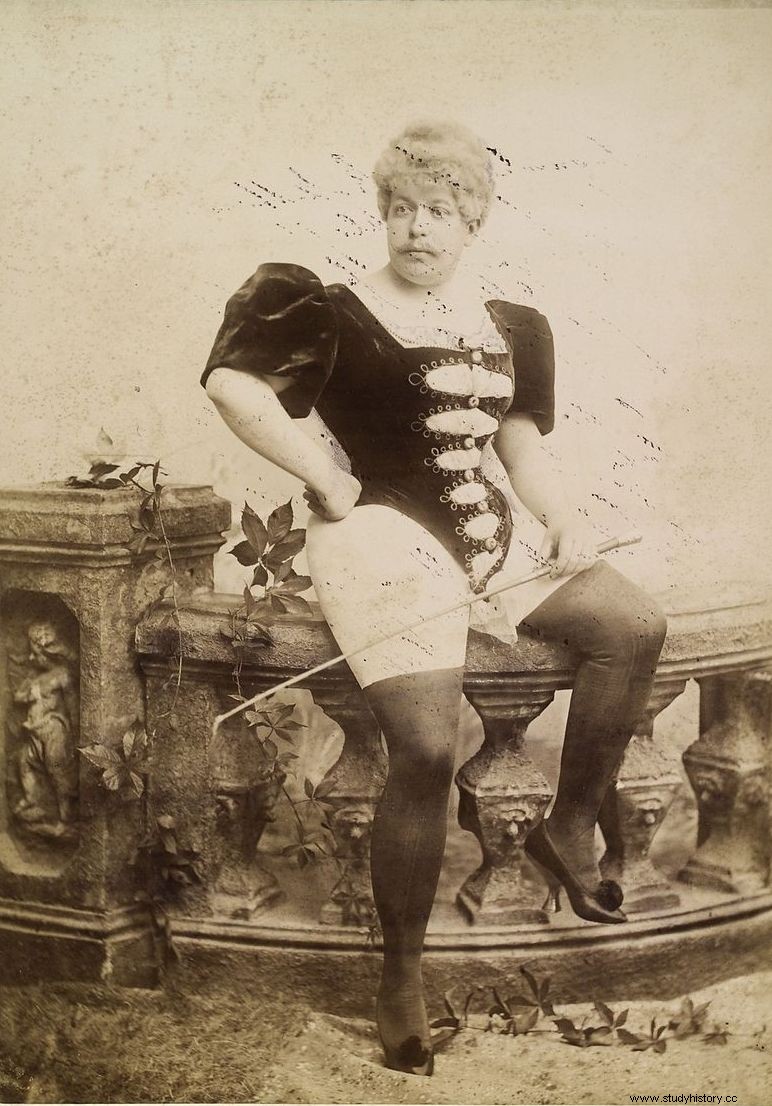
A man in a penny, with a whip in his hand. 19th-century photograph from the collection of prof. Krafft-Ebing.
For example, he cited the story of an 11-year-old who "had a sexual sensation for the first time" just from watching his father wash his brother in the butt. It was stimulating to think that he might be in the same situation. For one 5-year-old girl, it was enough for her to imagine that she was a dying little animal, and she experienced "pleasant tremors" combined with "sexual pleasure".
The sources of such impulses remained the subject of heated debate. However, educators preferred to be safe than sorry. In the pages of the "Pomeranian Teacher" educators were warned against excessive beating of children, because:"Science has shown that there is a close relationship between the sexual constitution and physical pain. Physical pain can lead to sexual degeneration like sadism, masochism and the like. "
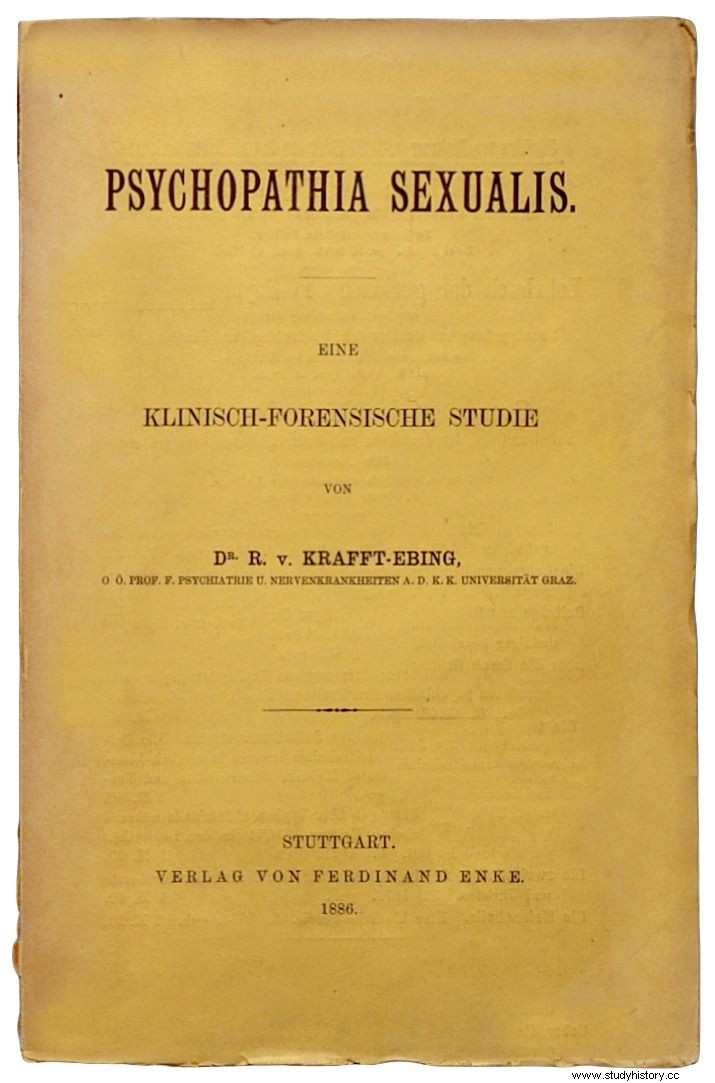
Front page of the first edition of Krafft-Ebing's groundbreaking work.
Masochism was dealt with in the most serious sexological works. Authors of the Gender Knowledge Encyclopedia in 1937, they explained:“To serve blindly, slavishly beloved or beloved, to do the worst work, the lowest service, to be tied and beaten, to be a servant and a page, a dog or a horse, to be mistreated or even to lose a life. This is the content of the most widespread masochistic fantasies. " Lodz venereologist Paweł Klinger quoted in Vita Sexualis. The truth about human sex life similar definition, emphasizing that "treatment like a dog" should be understood quite literally.
Where does the tendency towards masochism come from?
Masochistic pleasure was explained not only by inclinations hidden somewhere deep in the human mind, but also by a simple, physiological reaction. Of course, pointing out that only degenerate people can show a tendency towards it. "The beating of the buttocks brings a great deal of blood to the whipped part of the body," it was explained. - "This blood travels around the rectum, goes to the genital area, and causes sexual excitement and desire, which under normal conditions exhausted brain and flabby senses are unable to evoke."
Careful reading of the daily press confirms that in pre-war Poland there were many men admitting that they like to be pushed around. And that they dream not so much of a partner as a domino.
In the issue of July 18, 1932, "Ilustrowany Kuryer Codzienny" published announcements by two such gentlemen. The first of them emphasized that he represents the "female type", is submissive and wants to adapt "to the manifestations of completely extraordinary tastes and desires". The second one announced that he wanted to be "under a slipper", that he was dreaming of bondage and was looking for a woman with "special tastes". Replies should be sent with the note "CHANGED ROLES".
***
Old prejudices and fantasies. The history of Polish sexology is also a history of fear of one's own body and of what is hidden in the recesses of the human mind. In his new book "The Age of Silence" . Kamil Janicki tells how sex was thought and written almost a century ago. What were our great-grandparents afraid of? What attracted them? What were their darkest thoughts?
Period press articles:
- Is Nowaczyński exaggerating? , "Nowiny Codzienne", issue 83 (1932).
- Marriage , "Illustrated Daily Kuryer", No. 197 (1932).
- Tarnowska's trial , Gazeta Lwowska, No. 85 (1910).
- Tarnowska's trial in Venice , "Nowa Reforma", no. 122 (1910).
- Process hr. Tarnowska , "Forward", No. 63 (1910).
- From the judicial chamber , Gazeta Lwowska, No. 124 (1911).
